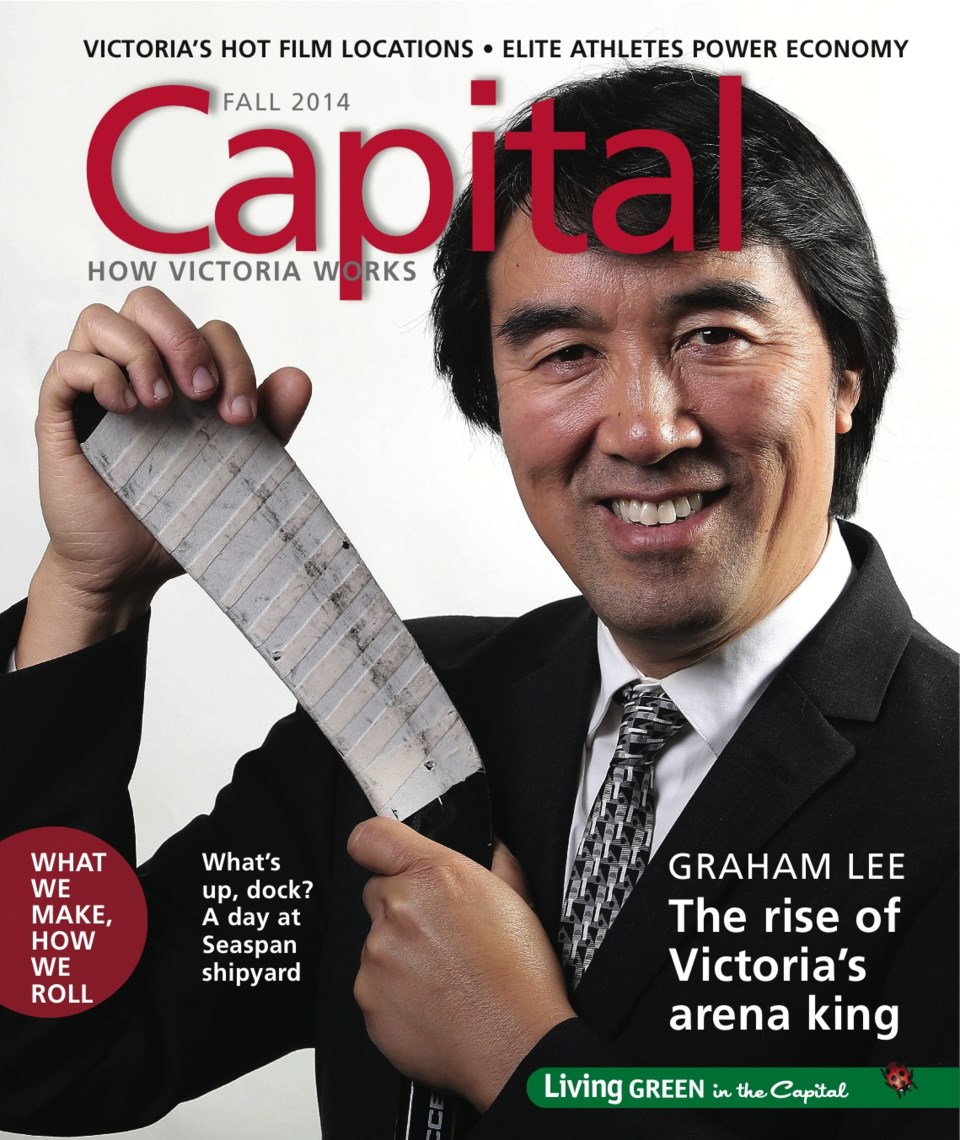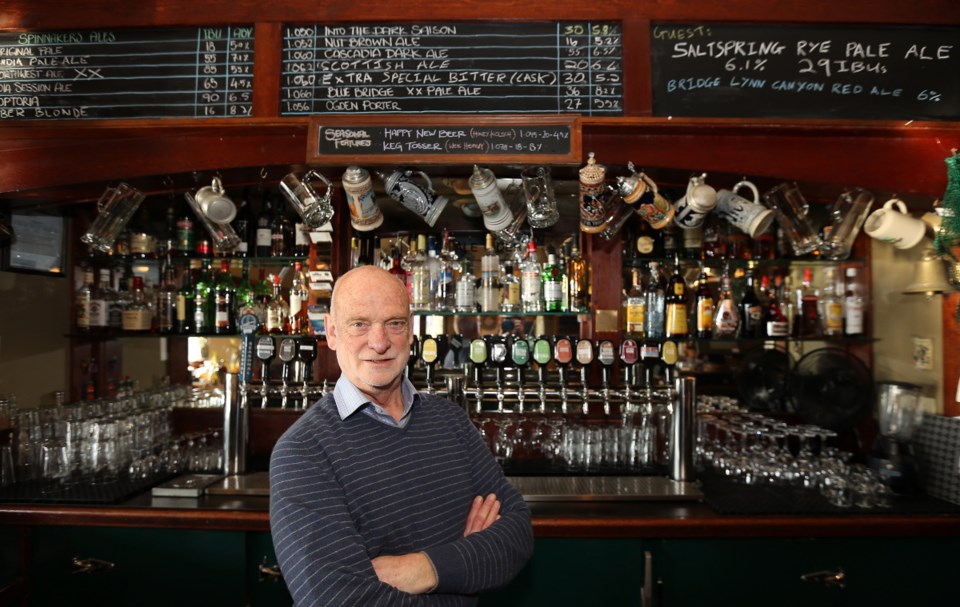Paul Hadfield is clearly not a patient man.
You might think the owner of Spinnakers Gastro Brewpub — one of the original craft brewers who sparked a “real beer” revolution on the West Coast when it opened in 1984 — would appreciate taking stock of where the industry is these days.
It has, after all, blossomed into more than 70 B.C.-based craft brewers.
In the capital region, there are five brewpubs and six brewery operations, counting the addition of Category 12 Brewing in Saanich by the end of this year. It follows the opening of Four Mile Brewing in View Royal this year, Hoyne Brewing in late 2011 and Moon Under Water brewpub in 2010. There’s also been significant expansion at the Phillips, Lighthouse and Driftwood breweries, and several new product offerings from Vancouver Island Brewing.
Hadfield’s reaction? “It’s about time.”
He may have a point.
The industry veteran notes the barriers to entry are as low as they ever have been as the heavy lifting over regulations was done in the early years. Equipment and ingredients are readily available and there’s a growing demand for unique and interesting beer.
 |
|
Click on the cover to read the fall 2014 issue of Capital magazine online |
“It’s probably harder to open a coffee shop these days than it is to open a brewery,” said Matt Phillips, owner of Phillips Brewing, the largest craft brewer on the Island, noting that growth brings competition for shelf and tap space. “The challenge isn’t to get started anymore. It’s staying started.”
Hadfield hopes the number of Victoria brewers doubles in the next five years, saying the sky is the limit for the local scene.
“We cannot supply the marketplace. The demand is too big. And it isn’t mindless consumption we’re talking about — it’s focused, with people chasing certain products, chasing certain brewers and chasing certain styles.”
Hadfield expects growth to come from brewers exploring niches and playing with styles and flavours.
“I think Matt [Phillips] has exposed the sweet spot in the market, rolling out one or two seasonal beers every month as new beers,” said Hadfield, who does something similar at Spinnakers. “We’re morphing from brewpub to production brewery.”
Phillips, which employs about 50 people, has established a full-time development brewer to work on new beers that can be introduced through the year.
That kind of experimentation is not likely to ebb, as craft brewers grab more market share each year.
In its latest quarterly review, the B.C. Liquor Distribution Branch showed larger brewers, defined as producing more than 160,000 hectolitres annually, saw a 2.2 per cent drop in sales to $718 million in 2014, while smaller brewers saw sales increase across the board.
According to the LDB, mid-size brewers (who produce between 15,000 and 160,000 hectolitres a year) saw sales grow 1.67 per cent to $122 million over the last 12 months and the smallest brewers (up to 15,000 hectolitres annually) saw a 43 per cent increase in sales to $67 million.
“This is the healthiest the craft brew industry has ever been,” said Sean Hoyne, owner of Hoyne Brewing and an industry veteran. “This is the time [that] those of us who have been in the craft brewing industry a long time have been waiting for.
“We have been on our soap boxes extolling the virtues of craft beer for years and the crowd has really come on board.”
And Hoyne notes that for every person who switches over to a craft brew, there is someone who is more likely to be open-minded about trying a wide variety of beer, which is good for the industry.
“Gone are the days of single brand loyalty,” Hoyne said.
That may be just as well, considering the variety available on the shelves and at Victoria’s breweries, to say nothing of the willingness of those breweries to experiment.
“What we’re seeing now is small brewers coming with real niche beers or styles — some will do just lagers, for example,” Phillips said. “The industry is still about individual flair. Every brewery doing their own thing their own way, which I always liked.”
But there is still plenty of collaboration and brainstorming — in part because most brewers have worked for or learned from someone else still in the business.
Phillips, who worked at Spinnakers and other breweries before starting his own in 2001, said everyone gets along because they share a common interest: The understanding that beer is more than a fizzy yellow liquid.
“There’s a level of mutual respect, and there’s an excitement that creates a subculture,” Phillips said, noting that brewers guard that collegial atmosphere. “You always worry about [expansion ruining it] but we make it clear that this is how we work.
“We all share ideas.”
Being open and approachable raises everyone’s game and allows further experimentation. Both Spinnakers and Phillips are starting to dabble in distilling, for example.
“We need to drink each other’s beers. We need to know what each other is making and learn from each other and play off each other,” Phillips said. “And the winner is the consumer.”
Breweries
- Driftwood Brewing Co., 450 Hillside Ave., Victoria, driftwoodbeer.com
- Category 12 Brewing, 2200 Keating X Rd., Central Saanich, category12brewing.com
- Hoyne Brewing Co., 2740 Bridge St., Victoria, hoynebrewing.ca
- Lighthouse Brewing Co., 836 Devonshire Rd., Esquimalt, lighthousebrewing.com
- Phillips Brewing Co., 2010 Government St., Victoria, phillipsbeer.com
- Vancouver Island Brewery, 2330 Government St., Victoria, vanislandbrewery.com
Brewpubs
- Canoe Brewpub, 450 Swift St., Victoria, canoebrewpub.com
- Four Mile Brewing Co., 199 Island Highway, View Royal, fourmilehouse.com
- Moon Under Water Pub and Brewery, 350B Bay St., Victoria, moonunderwater.ca
- Spinnakers Gastro Brewpub, 308 Catherine St., Victoria, spinnakers.com
- Swans Brewpub, 506 Pandora Ave., Victoria, swanshotel.com
